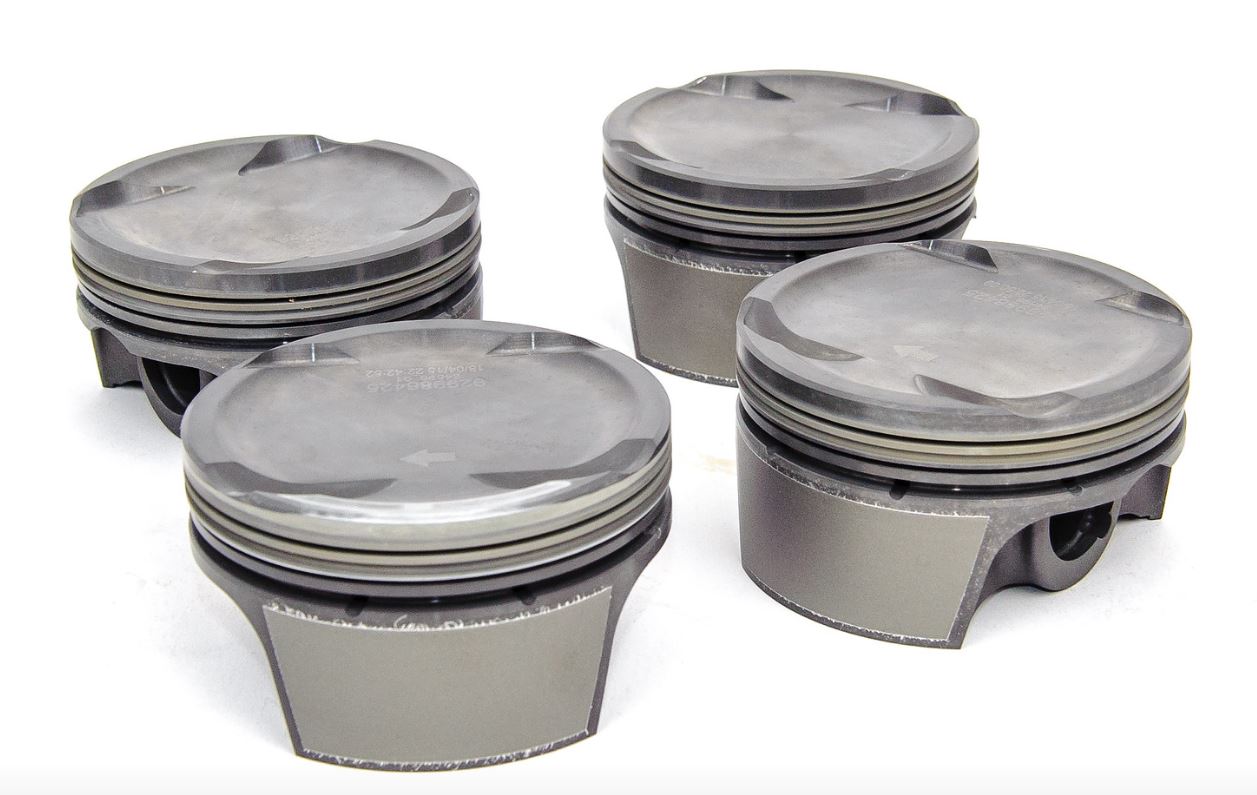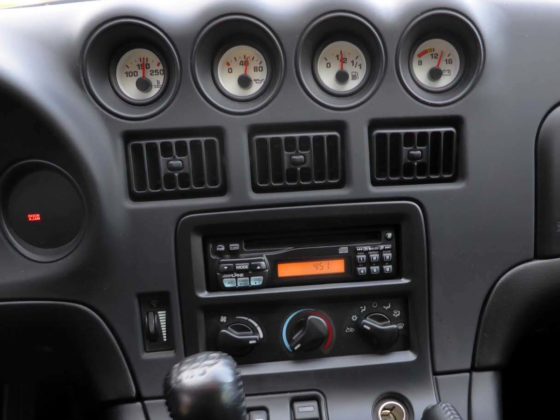
A new timing chain with all new chain guides were installed. Nope, I’m not opening this engine again for a long time.

To keep all the combustion pressure in the cylinder, we got a JE Pro Seal MLS head gasket. MLS stands for multi-layer steel and it’s common on heavy duty diesel engines, engines that have really high combustion pressures. If it’s good enough for big boost diesels used in commercial industry, it’ll be a walk in the park for our little boosted F22c. Again, there’s a lot in the details to making a good-sealing head gasket that’s also durable. JE has tight specification for surface roughness and flatness which are critical to create a good sealing interface. The entire gasket is coated to prevent the gasket from sticking to the deck surface too.

The JE Pro Seal MLS is comprised of three layers if 304 stainless steel which are laser cut to shape. To get the proper sealing elements into the layers of the gasket, the sheets are forged over a number of steps to create the sealing embossments geometry.

The Pro Seal head gasket is place down over the ARP studs.

Howard is torqueing down the head after installing the JE Pro Seal head gasket.

Next goes on the oil pan with Howard being meticulous and putting a full circle around the bolt holes. The baffled oil pan from Blacktrax Performance looks just as good as when it was first installed years ago.




21 comments
Love the work you’re doing. Any idea how much the inconel manifold will cost?
I budgeted ~$4k for it. I’m planning to get it and the turbine housing coated with SwainTech White Lightning for thermal management.
Awesome write up! Now I want to build a motor.
Did you do any prep on the block with the FRM sleeves? Just a hone or no hone at all? I’ve never messed with FRM lined sleeves so I’d love to hear your thoughts/how you handled that part of the block rebuild. Thanks.
I don’t believe my block required any honing. It did only have 70k miles on it. That said, there’s a very specific procedure with specific honing stones listed in the factory service manual. I went with the Mahle pistons in the standard 87.00mm bore but they are also available in 87.25mm bore.
Excellent write up! Can’t wait to see your thoughts once it’s turbocharged.
I spy some 999MP-1217HP Nissan 3bond sealant on the 3rd page, if it’s good enough for a GT-R its good enough for just about everything else lol.
Most of us MotoIQ guys are old school Nissan guys!
Great detail in the build. I love the paths to reliability and not cutting corners approach.
One question about the manifold/hot side setup. What was the reason you opted for an external wastegate vs internal? I would have thought with the tight packaging constraints it would’ve made an internal more desirable but you obviously did it for a reason. Better boost control? Thx!
The way the internal wastegate actuator is angled off the centerline of the turbo makes it pretty wide, so it doesn’t fit. We tried during 3D modeling to see if we could make it fit, but it doesn’t unfortunately. Check out the location of the actuator can vs. the turbine inlet flange and you’ll see why it doesn’t fit.
https://motoiq.com/project-s2000-part-25-designing-a-custom-turbo-setup-with-3d-scanning-cfd-fea-and-3d-printing/3/
It would maybe be possible with a regular rotation turbo, but then you basically have to make a sharp 90 degree turn out of the cylinder head, i.e. Greddy and SOS TS-Max turbo kits. And we know how those flow on the topend. Or you have to low mount the turbo, i.e. PTuning. And they had to make a custom engine mount.
Gotcha, thx for the response Khiem. I figured there was a reason. A shame the engine bay is so tight right by the exhaust ports, but the engineers obviously never planned for a turbo.. The concern with an external wastegate is one more component and the heat on track. I’ve heard from a couple people where the diaphragms fail due to the heat. I guess no such thing as a perfect turbo setup for this car..
Tial came to market with water cooled EWGs awhile ago due to failures in track use. The first one I knew of was on the old StopTech Evo X time attack car I helped out with. As the EWG was on the backside of the engine, it got no cooling airflow. Turbosmart has water cooled EWGs now. And if you read the fine print, at least on the Turbosmart EWG that are not water-cooled, it says to make sure there’s good airflow to the EWG. In serious track use, IWG are more prone to fail due to the wastegate flapper/poppet valve breaking off. Though on the newer Garrett OEM gasoline turbos in high performance applications, they have a solid one-piece arm and valve assembly. No more poppet valve to break off. There’s still potential for the arm seizing in the bushing though.
Ya I heard about the EWG’s with coolant ports to fix the problem, but for a street/track car more for fun vs a hardcore track car probably a bit much imo. Ya “serious” track use is a term that varies based on different people. :p I was mainly thinking fun for HPDE’s and being able to run 15-20min sessions. An IWG would suffice for someone like me.
Did you do any work to the actually block or clinder walls?
Deck, Hone or bore.
Hello i have s2000 f22 with kraftwerks.
Please recomend best setup for oil engine cooler
Hello khiem, i have s2000 ap2 stock engine with kraftwerks supercharger. What oil cooler engine recommend. This kit include Intercooler front.
What position do you recommend to install the oil cooler, behind the radiator? Please give me technical recommendations to make a good assembly. I really appreciate your collaboratio
Hello khiem, i have s2000 ap2 stock engine with kraftwerks supercharger. What oil cooler engine recommend. This kit include Intercooler front.
What position do you recommend to install the oil cooler, behind the radiator? Please give me technical recommendations to make a good assembly. I really appreciate your collaboratio
You can do a setup similar to mine if you need a lot of oil cooling, so it’ll be custom. If your use case is just some occasional hard driving, you would probably do just fine with an available S2000 oil cooler kit. I would suggest doing research on your kraftwerks supercharger kit.
What is your current oil cooling setting? you already have the turbo car. What would be my best street oil option?
This is the my setup that I’ve been running for years. It sounds like your best bet is to have a shop do a custom setup for you.
https://motoiq.com/project-s2000-oil-cooling/